It was a footnote in an edition of Jane Austen’s letters which led me, as far back as 2006, to research the story of Jane Austen’s three nieces, Marianne, Louisa and Cassandra Knight. These three pioneering women gave up comfortable, privileged lives in England to live through famine and the land war in 19th-century Donegal.
How did they come to be here? As so often in Jane Austen’s novels, it happened because of love; though when in 1827 the first of these three, Cassandra Knight, fell in love with her own personal Mr Darcy, Lord George Hill of Hillsborough Castle, some of her family felt apprehensive about her moving to a country about which they knew comparatively little. Hadn’t her famous aunt once advised Cassandra’s first cousin, Anna, to avoid even trying to write about Ireland in her fiction? “…We think you had better not leave England,” she had written in 1814. “Let [your characters] go to Ireland, but as you know nothing of the Manners there, you had better not go with them.”
What emerged in the book I subsequently published, May, Lou and Cass: Jane Austen's Nieces in Ireland , is that Cassandra and her sisters not only did go, but became so much part of Irish society that all three lived out their lives here, and lie today buried in Donegal, where they made their home.
Since that book’s publication, I have been privileged to work on the continuation of the story with the descendants of Cassandra’s eldest child Norah, all five-times great-grandchildren of Jane Austen’s brother Edward Austen Knight, and to be given access to unseen material in the family’s Dunleath archive, including memoirs, diaries and photographs.
Working also since last year with Karen Ievers of Mount Ievers Court in Co Clare who, finding that a spontaneous purchase on eBay turned out to be Lord George Hill’s lost album of family photographs, most kindly shared her discovery with me, I have been struck by the direct bridge provided by the Ievers/Hill photographs between Jane Austen’s Regency world and that of the late Victorians pictured in the Dunleath collection.
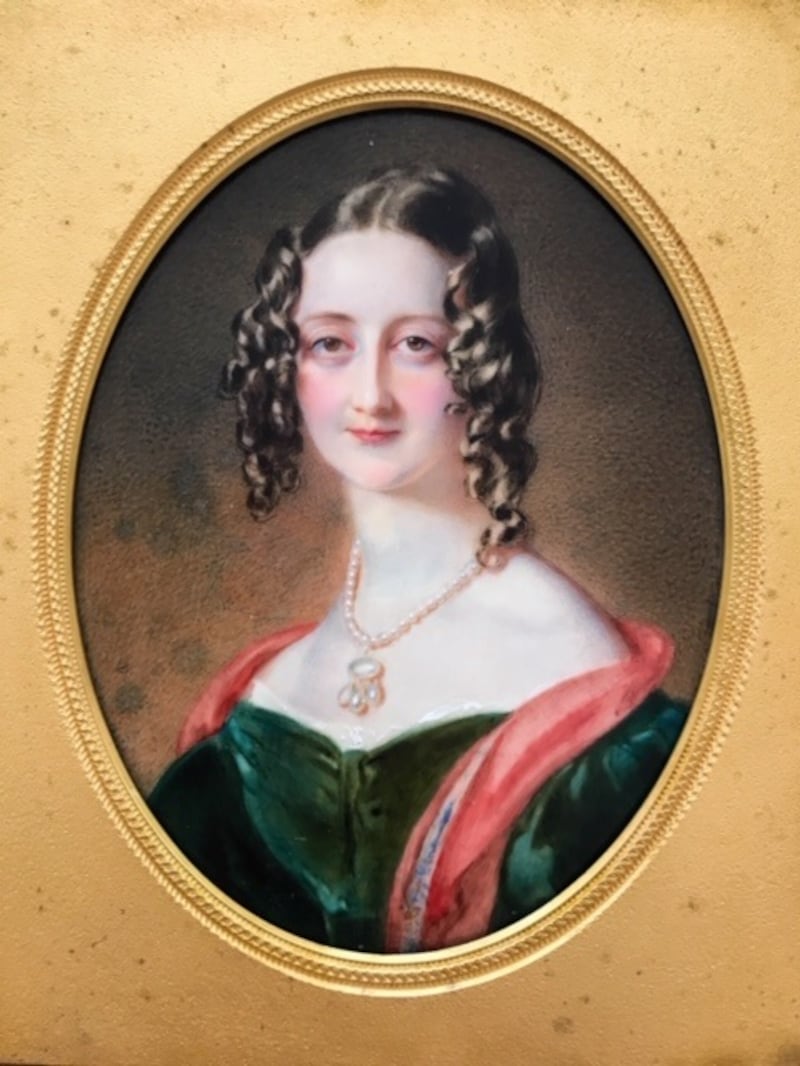
That sense has been reinforced, not only by Karen Ievers' wonderful discovery of an image I had vainly sought for years, of Cassandra Knight herself but also by her most absorbing article on her findings in this paper where, by coincidence, I recently outlined the story of Cassandra Knight's youngest child, Cassandra Jane Louisa Hill (1842-1901).
Cassandra Hill was a remarkable woman in her own right, opening in 1883 a convalescent home at Rathmullan in Donegal for working women, “regardless of creed or party”; and now, thanks to these two fascinating collections, it is possible to know more of the life of her elder sister, Norah (1835-1920).
In the Ievers/Hill photographs, for example, we can see the young Norah Hill, eldest child of Cassandra and Lord George, described by one of her English cousins as “the prettiest as well as the nicest girl I ever saw”, at the time of her engagement in 1858 to a handsome young officer, Somerset Ward, fifth son of Viscount Bangor of Castle Ward in County Down.
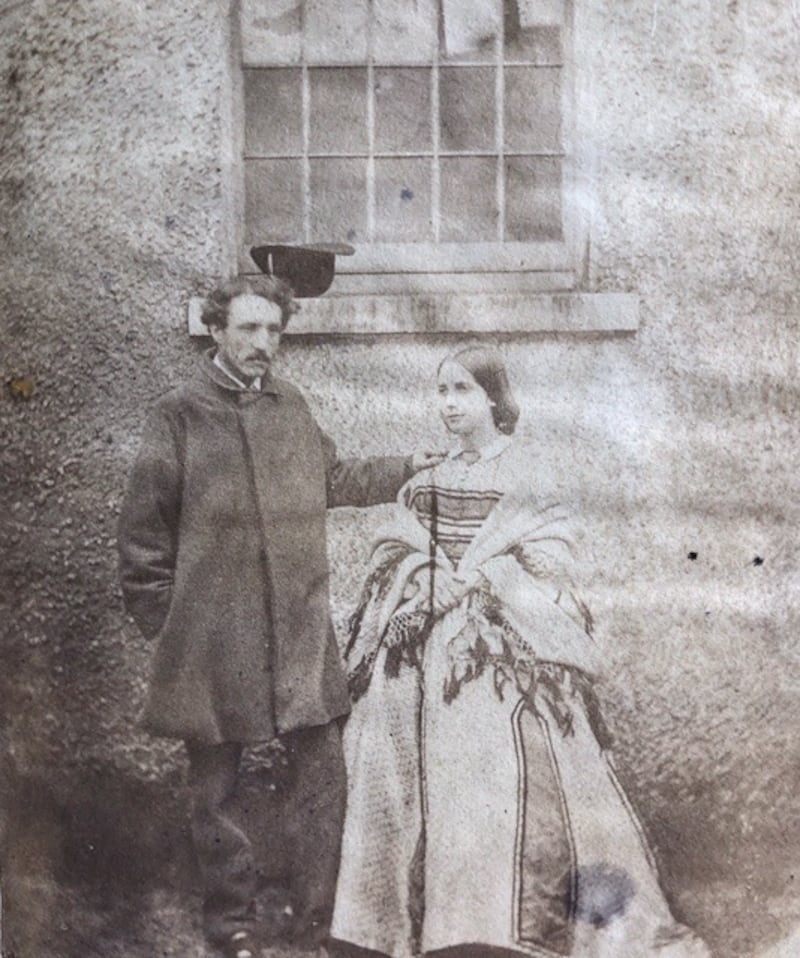
Already a veteran of the Crimean War of 1855 and the Indian uprising of 1857, this young man would go on to play a significant role in the Land War of the 1880s as agent to his brother-in-law Arthur Hill in Gweedore, a story traced in May, Lou and Cass. There is also another story, which perhaps only family photographs like these can hope to show. We see, for example, Norah Hill age before our eyes, first in the Ievers/Hill album and then in the Dunleath images, of which some were taken by Norah Hill’s daughter Norah Ward, Lady Dunleath, a keen photographer. The two collections complement one another, almost seamlessly tracing the family’s progress through the Victorian and into the Edwardian age.
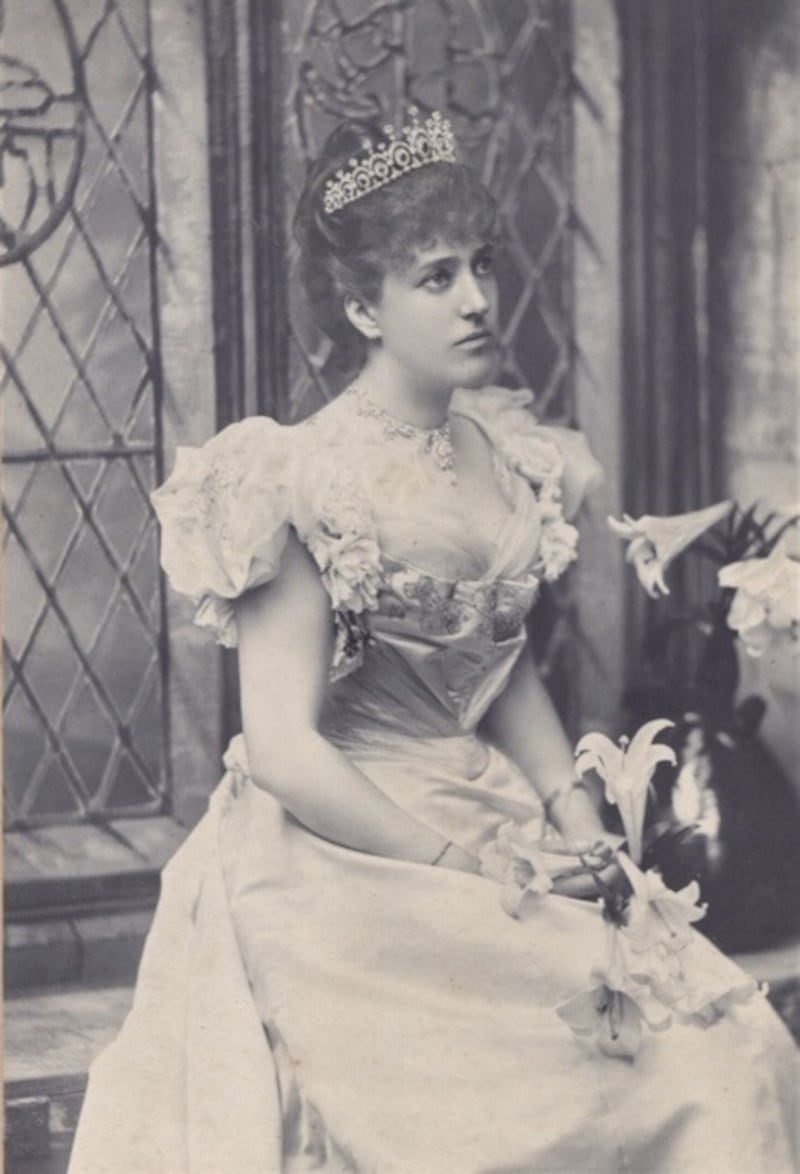
One photograph, taken by Norah Dunleath on a timer around 1910, shows us a group of four generations of descendants of Jane Austen’s brother Edward Knight. Here is the once young and beautiful Norah Hill in her mid-seventies, her face and frame bearing the signs of age and life’s griefs, not least the early death of her eldest son. We see her with her equally elderly, frail husband, Somerset Ward; beside them their granddaughter Eva Mulholland, with her first child, Helena and her husband John Saunderson, son of Col Edward Saunderson, a founder of the Unionist Party; and Norah Dunleath herself, just settling quickly into place as the timed photograph is about to be taken, beside her husband Henry Lyle Mulholland, Lord Dunleath.
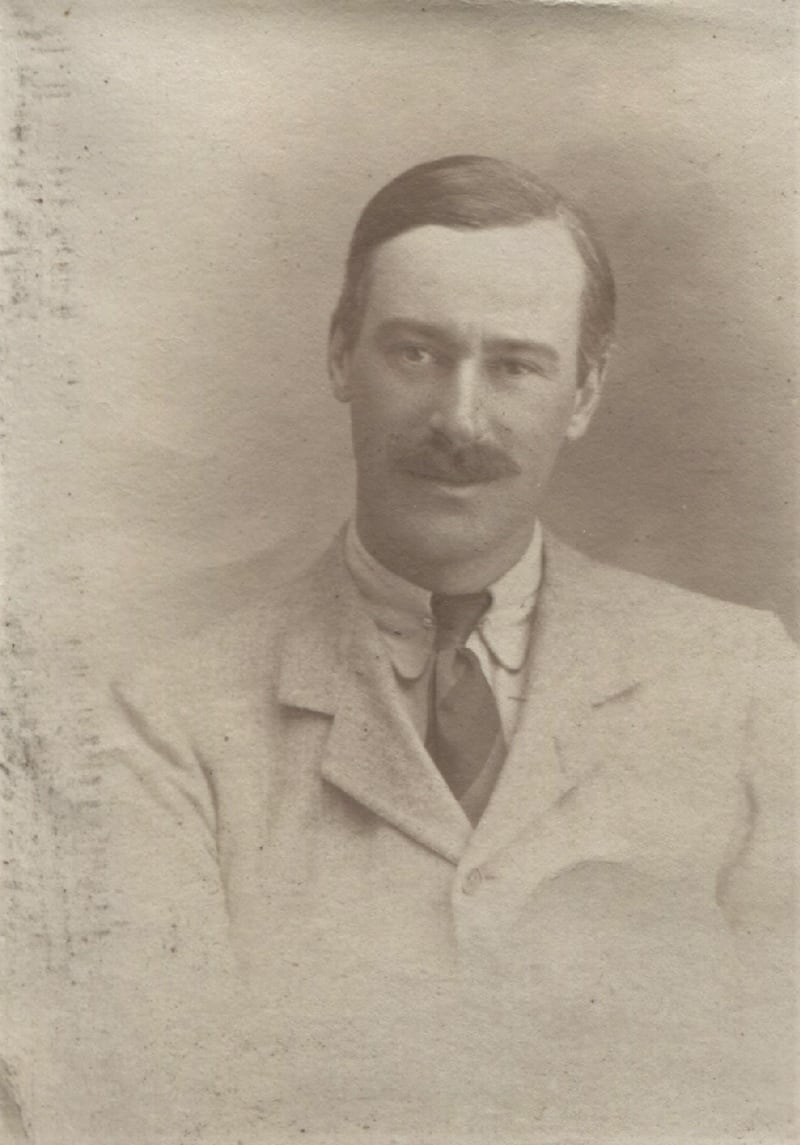
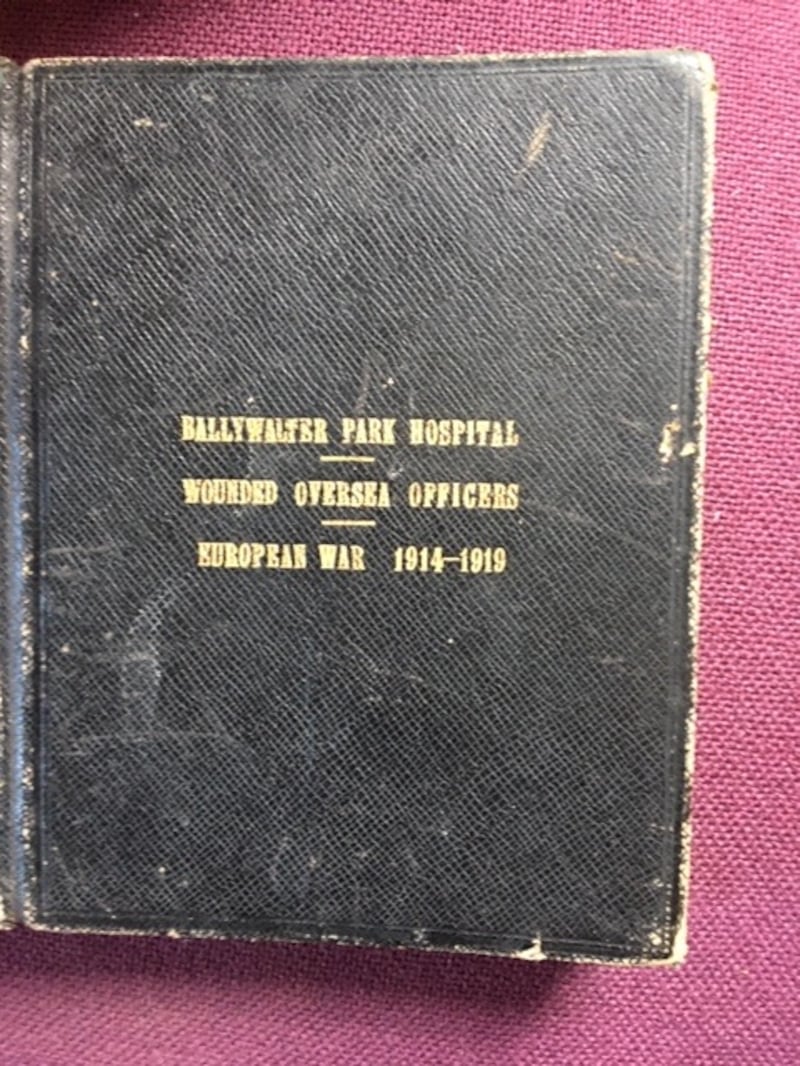
The Dunleaths’ sons, not present in that photograph, served in the Great War, the eldest, Andrew Edward (Teddy) killed in 1914 at Ypres. In his memory, perhaps, or following the example of her aunt Cassandra Hill, Norah Dunleath subsequently opened the family home at Ballywalter as a military and convalescent hospital for the rest of the war. Not only that: she made the difficult journey to visit the battlefields shortly after the war, and photographed them as they were, the recent evidence of human slaughter still apparent.
The Dunleaths’ only daughter, Eva (1884-1972), pictured in the group with her baby on her knee, kept diaries and a short private memoir, which I have been permitted to see by her grand-daughter, Cassandra Wedd. “My mother’s grandfather was Lord George Hill (Downshire) and my grandmother’s great-aunt was Jane Austen,” Eva writes, almost in passing, about a third of the way into the work. “I am descended from her brother Edward Knight (born Austen).” She does not linger on the fact, though her quick, vivid pen portraits of her great-uncles display a wry, Austen-ish humour.
Her memoir concentrates on describing the last days of the Irish Big House, and she gives a clear-eyed, succinct picture of the workings of a society “strictly divided into classes” where “much depended on which category they found themselves in.” At the top were “old families, titled and landed gentry”: at the other end, “the poor”, of whom she writes: “In my childhood there was of course no welfare state, so many depended on the good offices of the big house. The female members visited ‘the poor’ taking them jars of food, red flannel petticoats (very badly sewn if I had anything to do with them), sometimes extra milk and coal, and tried to help the families when they were ill or in dire need”. She could be describing a morning in the life of Jane Austen’s Miss Woodhouse (Emma), or Persuasion’s Anne Elliot, young heroines conscious that those born to privilege were duty-bound to care for their tenants and those less fortunate.
Yet, Eva would not have been aware in her youth of her famous relative’s observations for, despite the known family connection, she was forbidden to open the novels of Jane Austen, which were “not considered suitable reading”. She could, however, “just remember” her great-aunt Marianne Knight – the niece Jane Austen describes in a letter of 1813 bringing to the theatre for her 12th birthday – gathering up her skirts and jumping over ditches in an Irish country lane when she was 90 years old, quite in the style of the young Elizabeth Bennet.
The Dunleath group photograph is then, at one level, a snapshot experimentally taken on a timer, telling a family story: on another, it is something else entirely. It not only captures four generations of Austen women spanning the Victorian and Edwardian eras, but also serves as a reminder that through the marriages of the two Norahs and their children into some of the then major Irish political families – the Wards of Castle Ward, the Mulhollands/Dunleaths of Ballywalter, the Saundersons of Castle Saunderson and through two of the surviving Mulholland sons, the Brookes of Brookeborough – the family would go on to shape the politics and society of what would, in 1921, become Northern Ireland.
It's an irony that might well have amused the long dead aunt who warned that the family did not know or understand Ireland's history and customs or, as she neatly put it in 1814, "the Manners there": which, it turned out, they came to know very well indeed.
Dr Sophia Hillan, former associate director of QUB's Institute of Irish Studies, is the author of May, Lou and Cass: Jane Austen's Nieces in Ireland (Blackstaff Press, 2011) and of two novels, The Friday Tree (Ward River, 2014) and The Way We Danced (Ward River, 2016). She will give the opening lecture at the Letterkenny Literary Quarter Festival on October 18th, with illustrations from the Ievers/Hill and Dunleath Collections. Hillan is also fellow literary executor of the McLaverty Estate with his daughter Maura Cregan, author of The Silken Twine: A Study of the Works of Michael McLaverty (Poolbeg, 1992), The Edge of Dark: A Sense of Place in the Writings of Michael McLaverty and Sam Hanna Bell (Academica Press, 2000) and editor of In Quiet Places: The Uncollected Stories, Letters and Critical Prose of Michael McLaverty (Poolbeg, 1989). Her most recent work is The Cocktail Hour (Arlen House, 2018). Quotations from the Memoir by Eva Mulholland are reproduced by permission of Cassandra Wedd


















